Managing hardware, software, and cloud services can be overwhelming for IT managers, disrupting workflows and causing stress. This blog explores ITAM challenges and provides solutions to boost your organization’s efficiency.
As your organization grows, so does the complexity of managing various IT assets, including hardware, software, and SaaS. Poor management of these assets can lead to significant vulnerabilities. The failure to properly track IT assets can result in cybersecurity and compliance risks, especially with the widespread accessibility of SaaS applications.
Thus, implementing a robust IT Asset Management (ITAM) strategy can secure SaaS-based vulnerabilities and provide long-term benefits for your organization. These benefits include better software compliance, cost savings, reduced SaaS governance risks, and improved planning for the IT asset lifecycle.
However, to successfully implement an ITAM strategy, businesses must overcome several challenges. These include lack of visibility into IT assets, complex IT processes, and the need for usage metrics to manage assets efficiently.
Now, we will guide you through the various ITAM challenges and also offer practical solutions to overcome them.
Key ITAM Challenges (+Solutions)
Let us discuss the key ITAM challenges an organization commonly faces and efficient solutions that suit your business requirements.
1. Not having complete visibility of IT assets
Large businesses with many IT assets need visibility.As lack of visibility leaves the IT teams needing clarification about the assets present in the organization. That complicates an organization's ability to attain efficient data management and asset disposition.
Decentralized organizations usually individually purchase, receive and manage IT assets, especially SaaS apps. This leads to a need for more visibility of the assets, which impacts inventory management and asset tracking.
Shadow apps usually occur due to traditional procurement-focused approaches. This indicates the need for more insights into the SaaS app acquisition processes, which can lead to unmanaged SaaS apps and increase the SaaS spending of the organization.
Business needs to keep track of asset lifecycles. It helps the organization optimize the IT assets before their disposal, ensuring you have capitalized the asset to its full financial potential and attained the overall ROI.
Manually managing the SaaS apps can be time-consuming for IT teams and may not provide you with accurate data. To attain precise data on SaaS apps, you need to automate the discovery process with the help of SaaS management platforms. This will automatically allow you to discover SaaS apps and make it easy to track them.
An efficient SaaS management platform, such as Zluri, will help organizations gain complete visibility into the SaaS landscape of your organization. You can identify all the SaaS applications present in the business processes. This will help you track the apps' lifecycle, starting from procurement to disposal.
With Zluri, you can track and identify SaaS apps with 9 discovery methods. The discovery methods include MDMs, IDPs & SSO, direct integration with apps, finance & expense management systems, CASBs, HRMS, directories, desktop agents (optional), and browser extension (optional). Accordingly, you can analyze and evaluate the IT assets of the organizations.
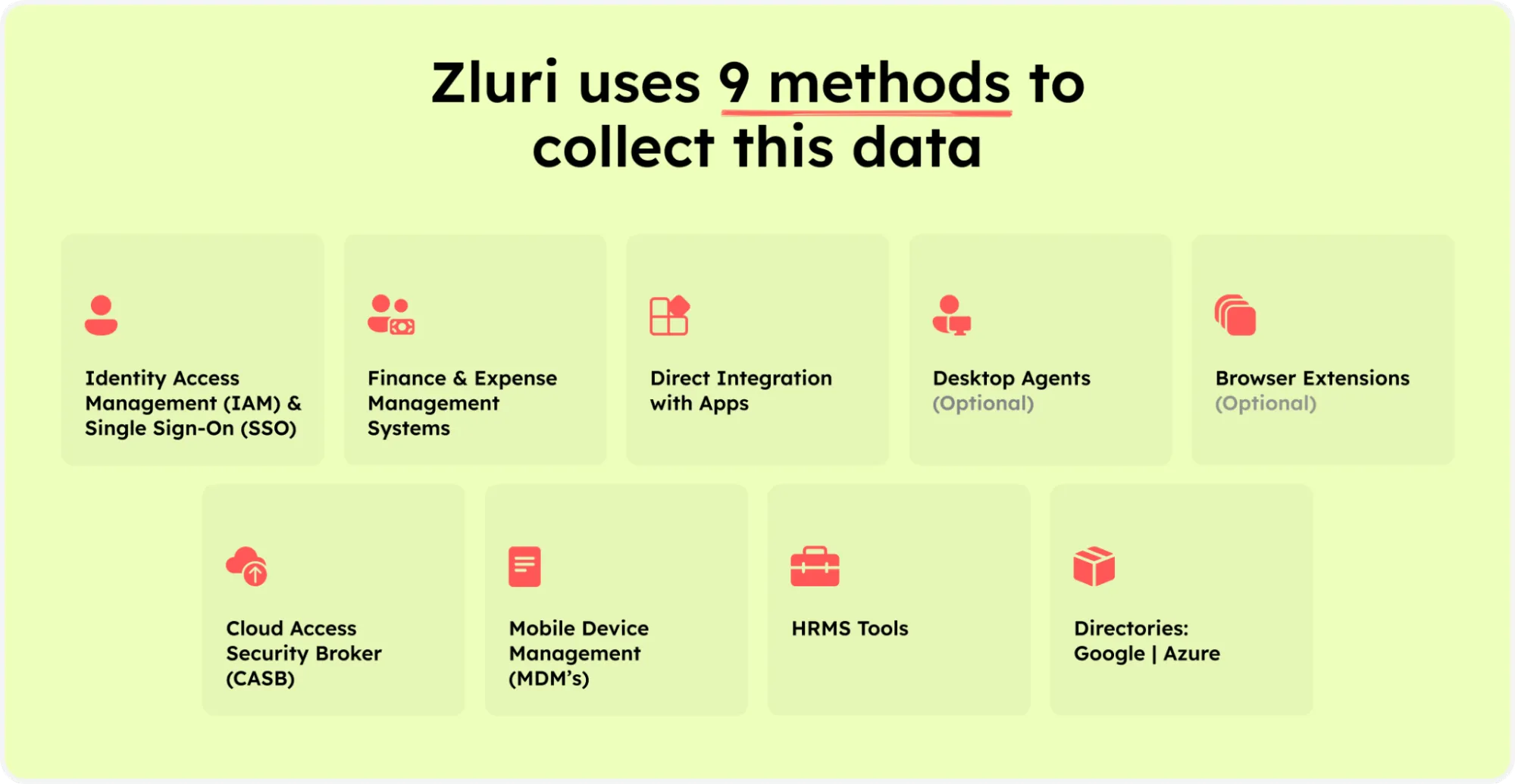
Zluri’s nine discovery methods
Additionally, Zluri has the largest SaaS app library with over 2,25,000 apps and directly integrates with 300+ apps. You get an overview of the organization's SaaS applications, the cost associated with the apps, which department is using it, and all the contracts and renewal updates. This will help you optimize your SaaS spending and make effective IT asset management decisions.
2. Security and compliance risks
Sometimes, organizations tend to purchase more SaaS applications as they overestimate their requirements. This gives rise to unwanted apps in the business. In addition, unused apps are retained in the organization as IT teams need to be made aware of these apps due to a lack of visibility. This leads to shadow IT and SaaS sprawl.
The organization needs to optimize the existing SaaS apps efficiently, and the unused apps must be turned in. These apps can pose increased security and compliance risks and consume unnecessary costs.
Businesses need complete insights into the SaaS applications to mitigate security and compliance risks. You must identify and analyze the apps and eliminate redundant and duplicates. If unauthorized users gain access to these apps, there will be a high chance of data breaches and cyber-attacks.
You need to ensure that only authorized users get access to the assigned apps, which will help track down the usage. This will help you to eliminate security risks. Organizations can use Zluri to mitigate security and compliance risks for better IT asset management.
With Zluri, you can view the threat and risk level of the SaaS applications. Accordingly, you can decide whether to continue or restrict the app. It will also help you view the app events and data shared with the apps.
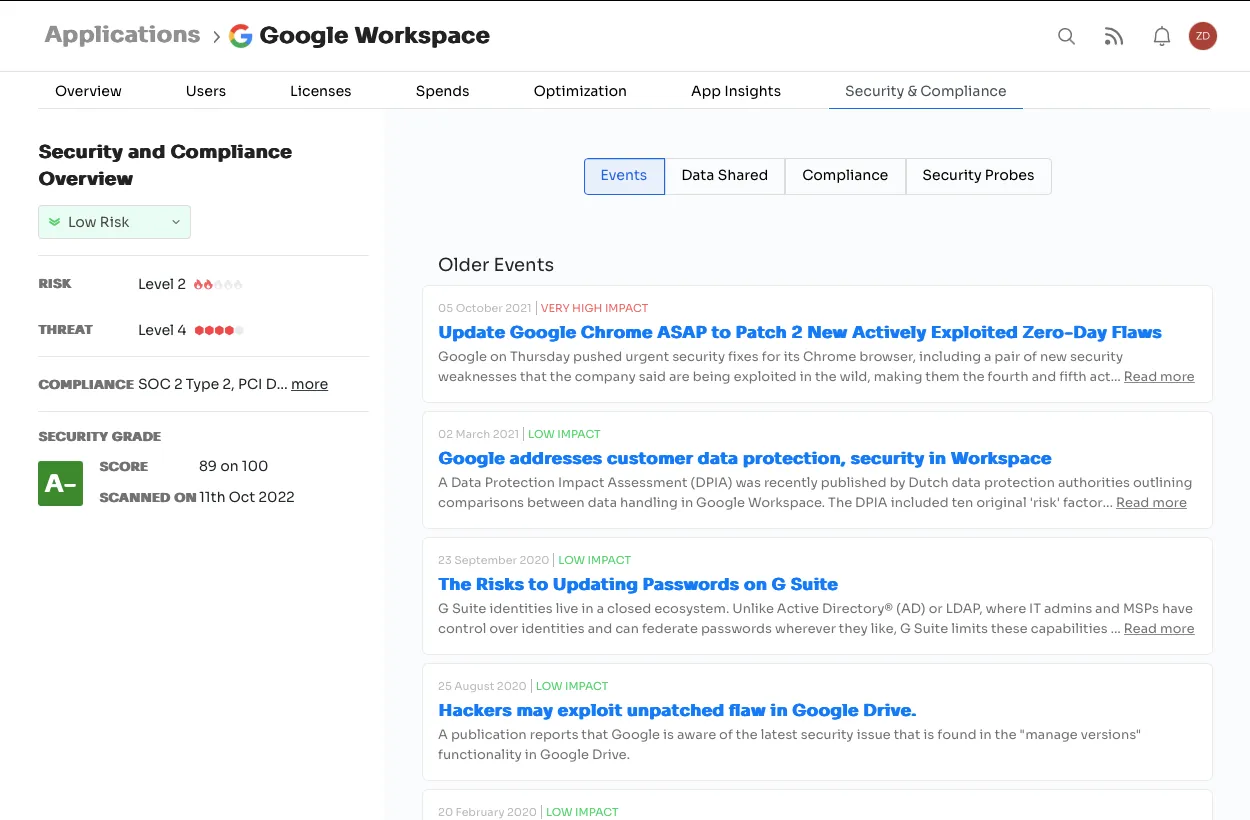
With Zluri, you can view who has access to the apps and get a complete insight into them. This will help you track unauthorized users, reducing cyberattacks. You can make better decisions while keeping sensitive data secure with appropriate insights to eliminate any potential risks or threats in the near future.
Additionally, Zluri helps you stay compliant with the government regulatory frameworks. It provides you with the information associated with compliance for each SaaS app. These insights will allow you to avoid hefty penalties during the audit.

3. Complex IT process
The IT process in a business environment involves onboarding, offboarding, request for a new app by the existing employee, and more. But this process takes time and makes the business workflow complex.
To ensure that the business structure is well managed, it requires a common platform that can combine assets, data, SaaS apps, etc., and manage the complete lifecycle of the assets. Assets lifecycle management starts from procurement to disposal of assets. Since SaaS apps contribute more to IT assets, a business must manage the SaaS app's lifecycle.
Zluri simplifies the onboarding and offboarding process. You onboard a new joiner to access the required apps with a few clicks. In contrast, when an employee leaves the organization, Zluri helps you to revoke access from ex-employees and prevent your data from data breaches or cyberattacks.
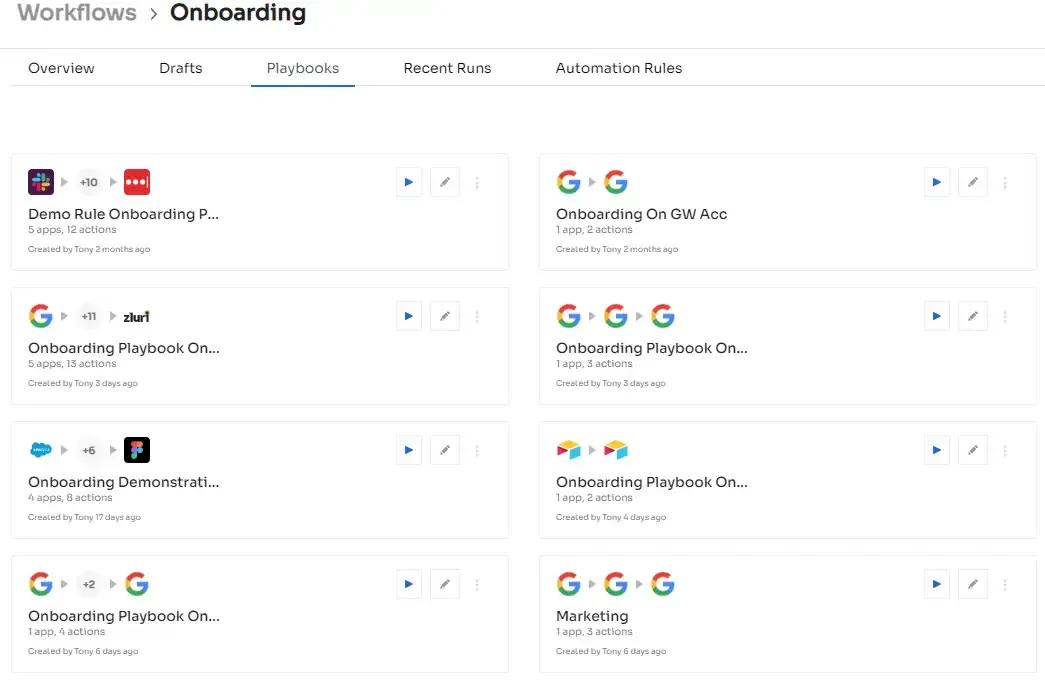
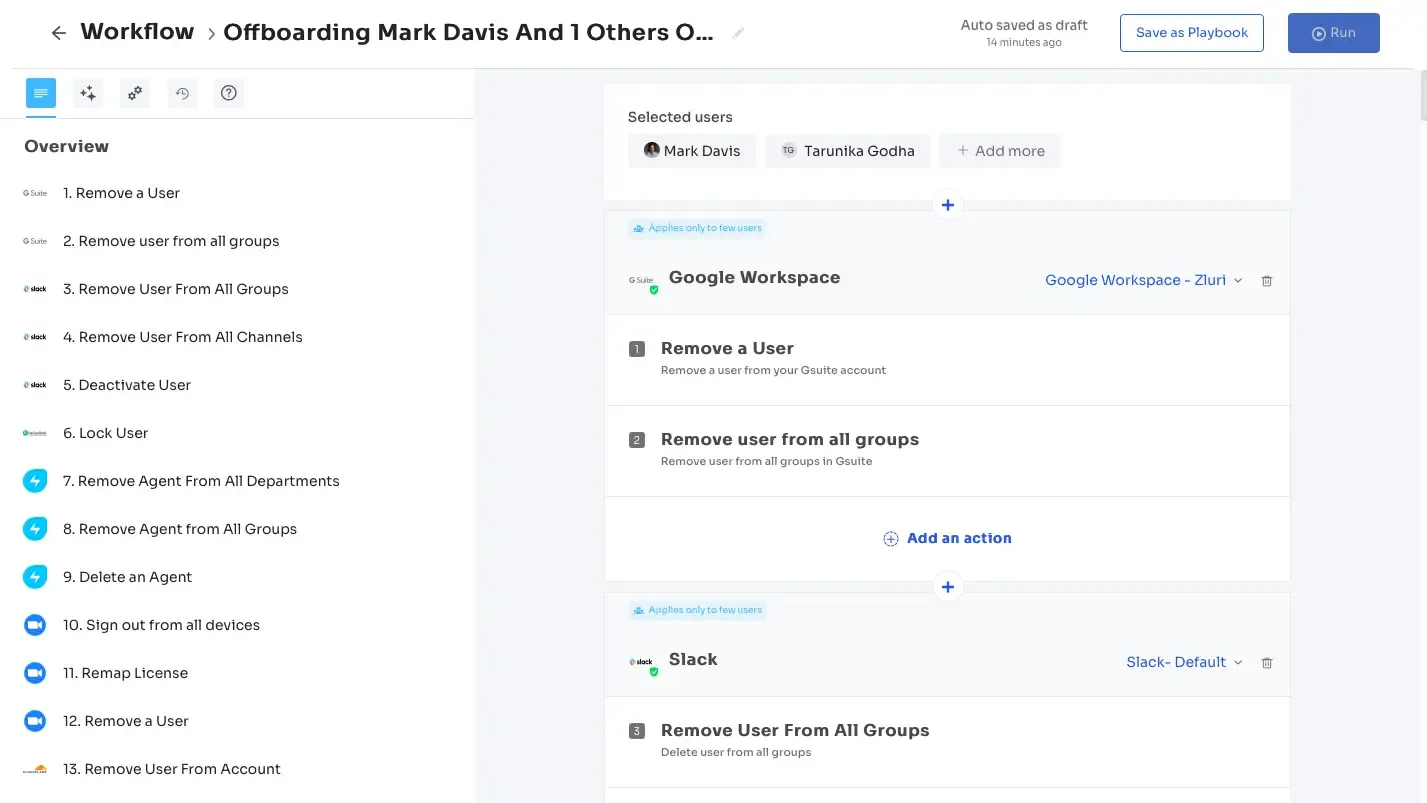
Zluri offers organizations a self-serve model - Employee App Store (EAS). It gives access to applications to new joiners. It automates and simplifies the whole SaaS access management process.
Even though employees get to choose the apps, the IT team creates the whole Employee App Store. With Zluri, you get to decide the apps shown to the employees in the app store, and the control over employee access remains with you.
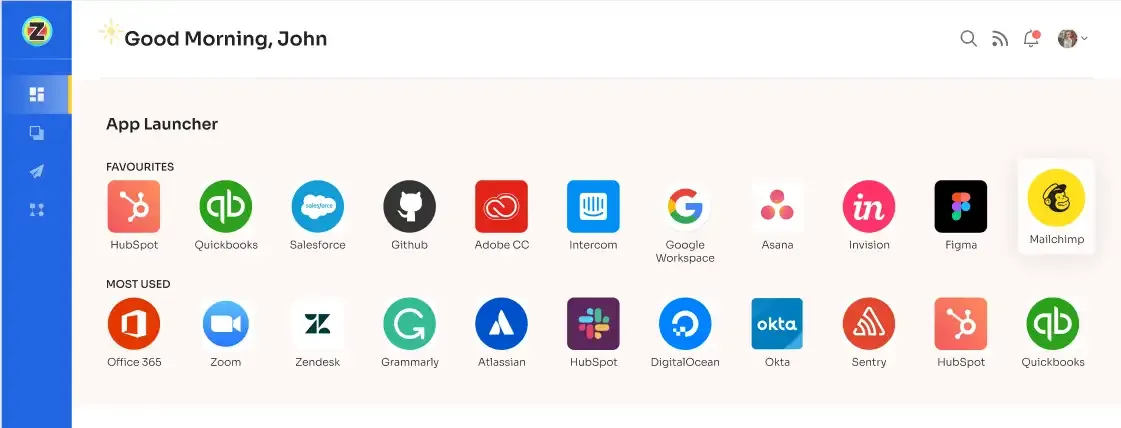
The employee app store helps you with SaaS approvals and licenses assignment to your employees. It simplifies the onboarding process, updates SaaS, and saves time on repetitive tasks of the IT teams. With EAS, IT teams can focus on achieving goals to maximize the overall ROI.
Further, you can allow employees to request their required apps in the employee app store.
Zluri offers SaaS buying services that help you procure new apps and get you the best deal. When an employee requests a new app, we can assist you with purchasing and negotiating for the app. This will help you save time and money. Moreover, we work as an extended member of your team and maintain transparency while dealing with the vendors.

4. Not having usage metrics
Usage data of SaaS apps is crucial for managing IT assets. Sometimes, SaaS apps are independently used in the organization, making it difficult to track the usage of these apps. The data will support you in understanding the usage and how crucial the app is to prioritize its renewal.
Usage monitoring gives you insight into the standard user applications and is essential for the company to operate smoothly. Only this data can help you understand the usage and plan of the app before the renewals.
To make strategic decisions before renewals, you require renewal insights. Without these insights, it can be difficult to track the upcoming renewals, and you will lose the upper hand in negotiations.
Manually managing SaaS can be time-consuming and prone to human errors. It may need to provide you with accurate data. To make the IT asset management process effective, you must monitor SaaS apps with an SMP and get a view of the granular data.
Zluri can offer you usage monitoring data. It helps you identify duplicate and abandoned apps, be proactive with auto-renewals, etc. The insights will further assist you in terminating the applications that are unused or abandoned apps and prioritizing the contracts as per your business needs.
Additionally, as per Kuppingercole's research and analysis report the renewal calendar of Zluri helps you avoid surprises and prioritize the renewals as per its size and business needs. With Zluri, you can get alerts prior to renewals. For contract, 30 days, 15 days, 7 days, and 1 day prior alerts. On the other hand, for payment, you get 7 days and 1 day alerts. You can also customize these alerts as per your requirement.
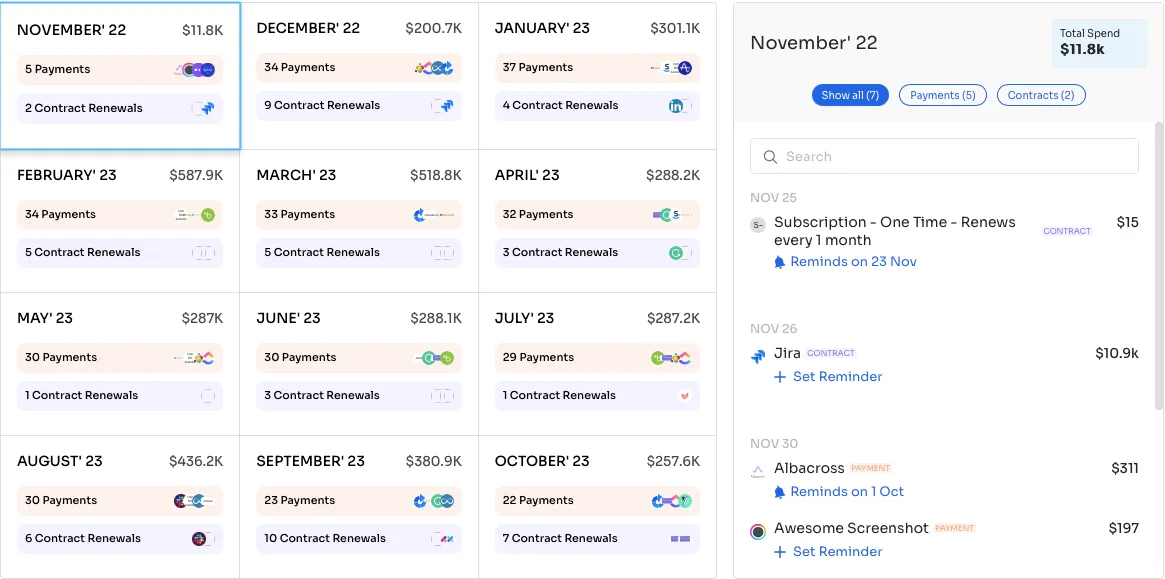
Renewal calendars prevent auto-renewals. Knowing the renewal date lets you make proactive renewal decisions on renewing or cancelling the contract. Further, you can review the initial contracts and work on negotiation strategies. Finally, it directs you to renegotiate each app months before renewal.









.svg)





















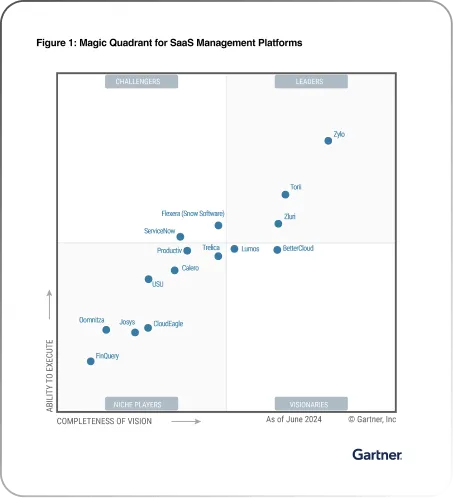







.webp)







.webp)
.webp)





.webp)